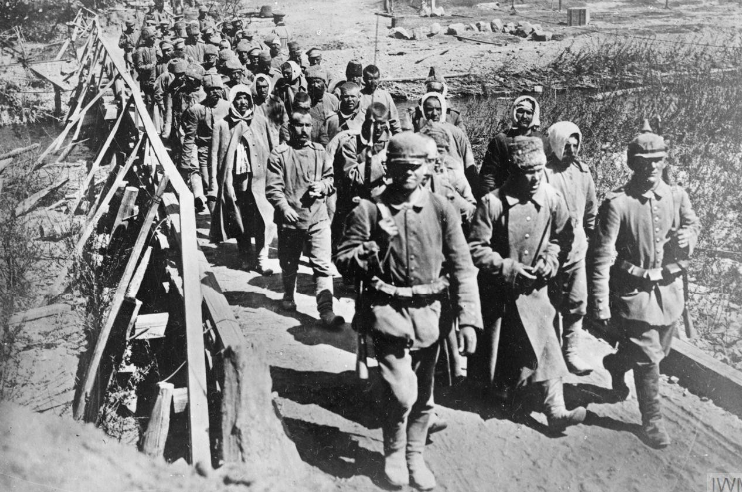2 May 1915 Battle of Gorlice
Categories: First World War , Calendar

The combined German-Austrian forces succeeded in paralysing the advancing Russian army in the east in the spring of 1915, one of the most important moments of the First World War. The key battle took place at Gorlice.
It was 1915 and in the west the German army repelled numerous attacks of the Franco-British offensive with minimal losses. The Turks, who had won the Battle of Gallipoli, were also doing well. They repelled all attacks by British and French naval and underground forces. In the east, Germany, in conjunction with Austria-Hungary, formed a new army with the aim of disabling Russia in a single blow.
Hans von Seeckt, who had succeeded in the battles of Vailly and Soissons in France in January 1915, became chief of staff of the newly formed military forces of the Central Powers. Chief of the General Staff Erich von Falkenhayn believed that Seeckt, based on his experience, had masteredthe greater task of commanding the eastern front against the Russian enemy in a key battle. By the end of April, the Central Powers had assembled sixteen divisions and artillery southeast of Kraków. The German 11th Army was to join the Austro-Hungarian 4th Army in attacking the Russian 3rd Army near Gorlice.
General August von Mackensen was appointed tactical supreme commander of the resulting German-Austrian forces. He was given the task of breaking through the Russian lines and crippling their forces advancing southward across the Carpathian Mountains. The Central Powers gained the upper hand over Russia. The battle began on May 2, 1915 in the northern Carpathians in the Gorlice area. Czechs serving in the Austro-Hungarian and Russian armies also intervened in the fighting. In the latter case, they were compatriots living in Russia before the war.
The very first day of fighting ended for the German-Austrian forces beyond expectations. Within two days, the 11th Army captured about 17,000 Russian prisoners. Moreover, by May 10, the combined forces managed to push the 3rd Russian Army all the way to the San River in southeastern Poland, where the enemy was forced to retreat. General Radko Dimitriev declared at the time that the army under his command had bled to death. Out of 250,000 men, only 40,000 were able to take up a new defensive position. And yet the enemy, in the form of German-Austrian forces, was far from stopping at the San River and continued to punish the Russians further.
When the offensive was halted on June 22, the Central Powers advanced some 300 kilometers and retook Lvov. They inflicted huge losses on the Russian army. The 11th Army alone captured more than 250,000 men and 225 machine guns. Russia's allies were also aware of the losses on the eastern front. Already in a report of June 6, British liaison officer J.F. Nielson described the Russian army as a "harmless mob".
The success in the offensive around Gorlitz was crucial for the further development of the First World War. For it reduced the pressure on the threatened Austro-Hungarian defensive positions in the Carpathian Mountains. If the Russian forces had managed to reach Budapest, they would have strengthened their position on the eastern front. The key to the success of the Central Powers was the speed of the attack and several other sub-steps. For example, German soldiers had to wear Austrian uniforms to confuse the enemy, who was unable to identify the enemy's force distribution.
Sources:https://defenceindepth.co/,https://encyclopedia.1914-1918-online.net/,www.iwm.org.uk
The article is included in categories: